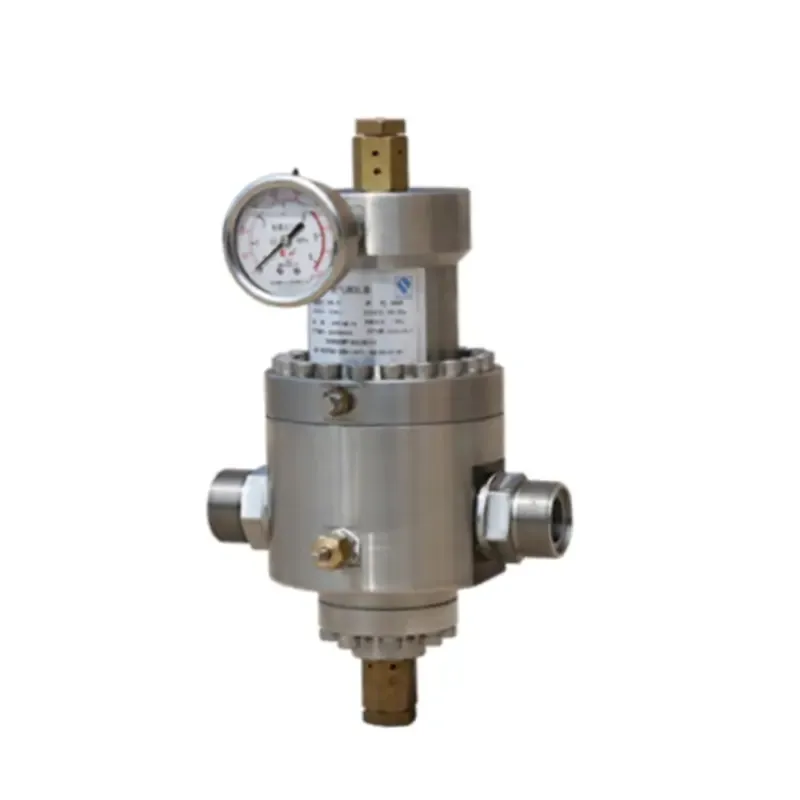
Dec . 10, 2024 22:44
Back to list
Gas Pressure Regulator Function and Applications in Various Industries
Gas Pressure Regulator Essential Mechanism for Safe and Efficient Gas Utilization
Gas pressure regulators are vital components in various applications, playing a crucial role in ensuring the safe and efficient use of gases across different industries. From household appliances to large industrial systems, regulators help control gas pressure, ensuring that operations run smoothly and safely.
Understanding Gas Pressure Regulation
At its core, a gas pressure regulator is a device that reduces the incoming high pressure of gas to a usable level. It ensures that the gas supply remains consistent, regardless of fluctuations in supply pressure. This consistent delivery is crucial for various applications, including heating systems, cooking appliances, and industrial processes, where the performance and safety of operations depend heavily on regulated gas pressure.
How Gas Pressure Regulators Work
The operation of a gas pressure regulator is based on the principles of physics. The device uses a spring-loaded diaphragm that responds to the pressure changes in the gas being supplied. When gas enters the regulator, it pushes against the diaphragm, causing it to move. If the pressure exceeds the predetermined threshold, the diaphragm closes, restricting gas flow and thereby reducing the output pressure. Conversely, if the pressure drops below the set level, the diaphragm opens, allowing more gas to flow through.
.
Applications of Gas Pressure Regulators
منظم ضغط الغاز

Gas pressure regulators are ubiquitous in both residential and industrial settings. In homes, they are commonly found in gas lines for stoves, water heaters, and furnaces, ensuring safe and efficient operation. In industrial settings, they are used in manufacturing processes, power generation, and chemical processing where precise gas flow rates are necessary.
Moreover, regulators play a vital role in the medical field, particularly in anesthesia, where precise gas delivery is crucial for patient safety. In laboratories, regulators are essential for controlling gases used in experiments, ensuring that reactions occur under the appropriate conditions.
Safety Considerations
The importance of gas pressure regulators extends beyond efficiency; they are critical for safety. High-pressure gas can be dangerous, posing risks of leaks, explosions, and equipment damage. Regulators help mitigate these risks by preventing excessive pressure and ensuring that gas is delivered safely.
Regular maintenance and inspection of gas regulators are essential to ensure their proper functioning. Routine checks can help identify wear and tear or other issues that might compromise safety. Additionally, choosing the right type of regulator for specific applications is crucial, as different gases and pressures may require specialized equipment.
Conclusion
In conclusion, gas pressure regulators are integral to the safe and efficient use of gas in many applications. By maintaining consistent pressure and ensuring safety, these devices enable a wide range of industries to operate effectively. Whether in a home, an industrial complex, or a medical setting, the role of gas pressure regulators cannot be overstated. As technology advances, ongoing innovations in pressure regulation will continue to enhance safety, efficiency, and performance across sectors, making our interactions with gas safer and more reliable.
Latest news
-
Safety Valve Spring-Loaded Design Overpressure ProtectionNewsJul.25,2025
-
Precision Voltage Regulator AC5 Accuracy Grade PerformanceNewsJul.25,2025
-
Natural Gas Pressure Regulating Skid Industrial Pipeline ApplicationsNewsJul.25,2025
-
Natural Gas Filter Stainless Steel Mesh Element DesignNewsJul.25,2025
-
Gas Pressure Regulator Valve Direct-Acting Spring-Loaded DesignNewsJul.25,2025
-
Decompression Equipment Multi-Stage Heat Exchange System DesignNewsJul.25,2025

